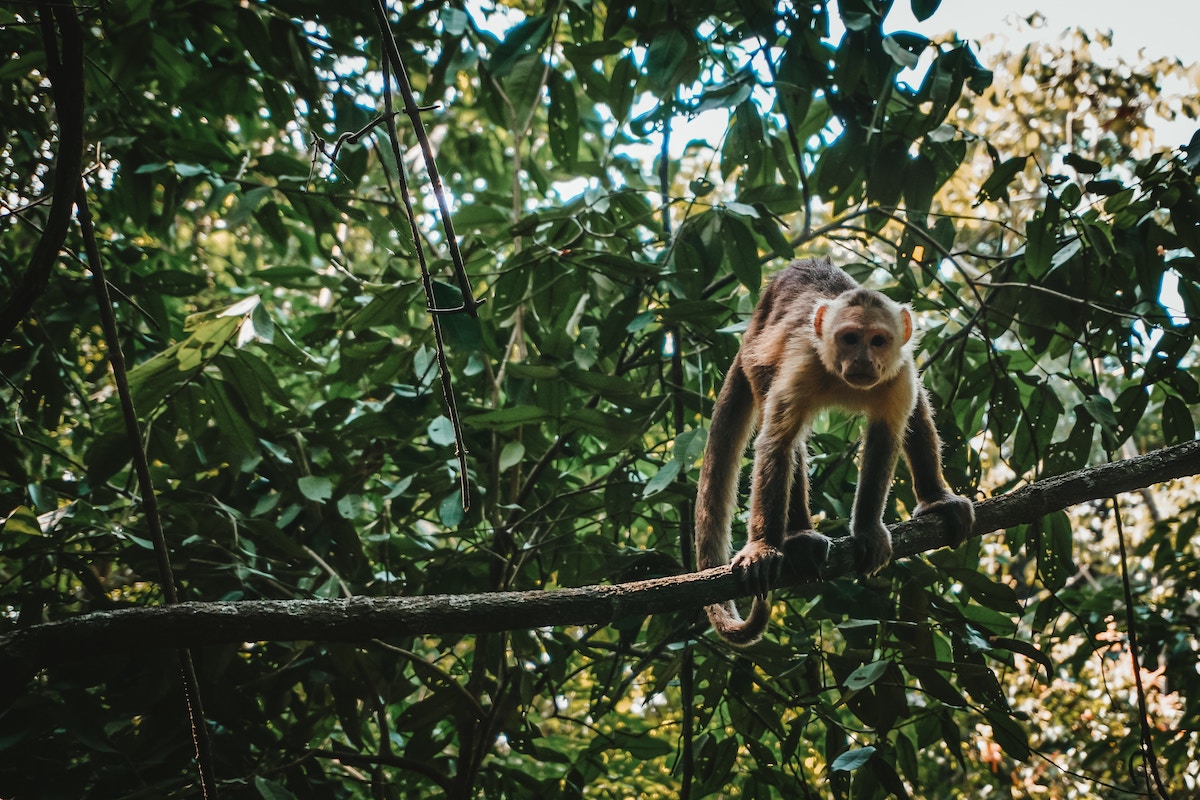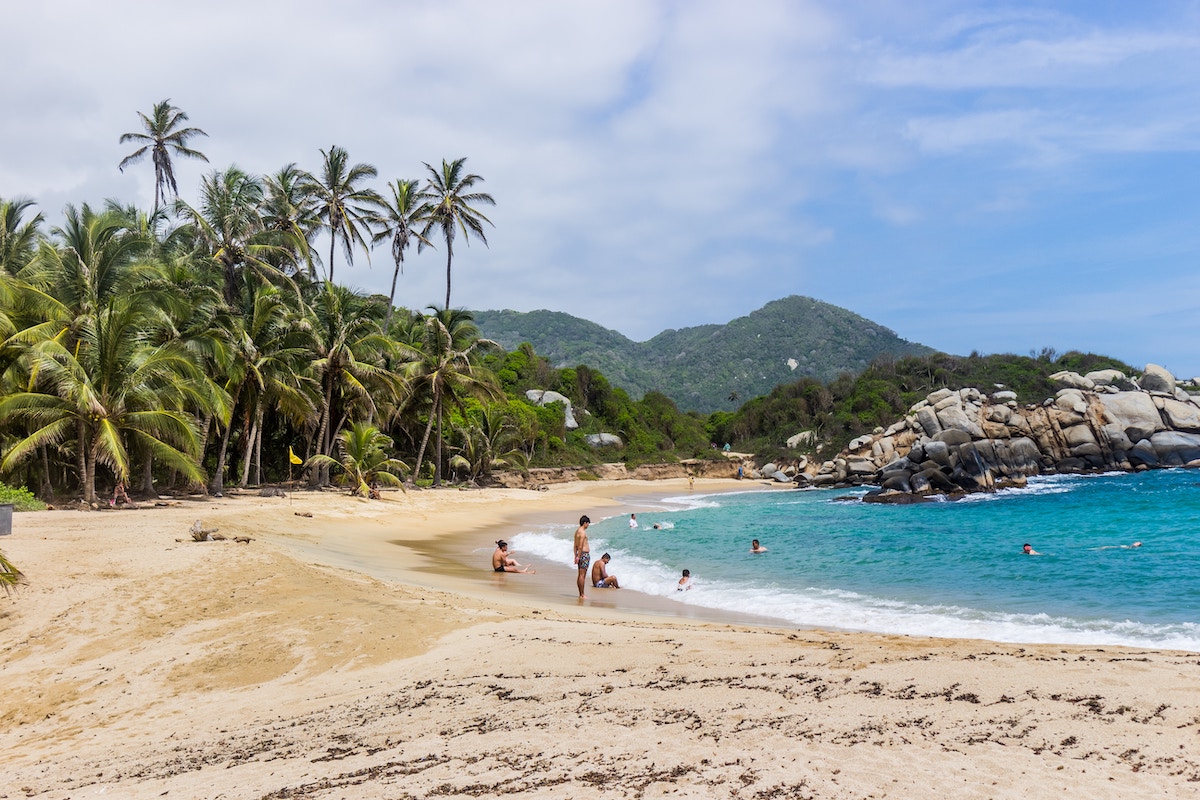By: Heather Keys
Skip to...
Situated in northern Colombia, Tayrona National Park is a 15,000-acre nature preserve named after the Tayrona people, an indigenous group who inhabited the area long before the arrival of the Spanish colonizers in the 16th century. The Tayrona civilization was highly sophisticated, with a writing system, advanced agricultural engineering practices, and complex religious practices.
The Tayrona were among the many indigenous groups in South America who suffered greatly under Spanish colonization, succumbing to disease, slavery, and forced assimilation. Descendents of the Tayrona people, including Kogi, Arhuaco, Kankuamo, and Wiwa, still live in the region.
Ruins of the Tayrona civilization can still be seen in the park today. Among the most famous of these is Pueblito Chairama, a site accessible by hiking trails—at its peak, this city was thought to have housed several thousand people and had an extensive road system, terraced fields, and intricate stone dwellings.
The Colombian government recognized the region’s importance and established it as a national park in 1964 to protect its unique biodiversity and historical significance. Today, Tayrona National Park is an important site for ecological preservation and cultural heritage in Colombia.
Biodiversity in Tayrona National Park

Photo by Berend Leupen on Unsplash
Tayrona National Park’s unique geographic position and ecosystems make it an exceptional place for biodiversity. The park is home to a variety of distinct ecosystems including mangrove swamps, coral reefs, seagrass beds, and rainforests.
Plants
The park is home to a wide range of plant species. The rainforests within the park are home to numerous tropical tree species, many of which are hundreds of years old. These forests are also rich in lianas, ferns, and a stunning array of colorful orchids. The coastal areas feature mangroves and sea grapes, while the sandy beaches are lined with coconut palms.
Animals
Tayrona National Park is also known for its abundant animal life. Among the mammals found within the park are howler and capuchin monkeys, deer, jaguars, tapirs, and the critically endangered cotton-top tamarin. The park is a must-visit for birdwatchers, with over 300 bird species, including the military macaw, the collared aracari, and the white-bellied antbird.
Reptiles in the park include the green iguana and various species of sea turtles, which come to the park’s beaches to nest. Tayrona’s coral reefs and coastal waters are home to a wide array of marine life, such as colorful tropical fish, sea sponges, lobsters, and various corals.
Things to Do in Tayrona National Park

Photo by Olimpo Ávila Salazar on Unsplash
Tayrona National Park offers lots of activities suitable for all kinds of outdoor enthusiasts:
- Hiking: The park has multiple hiking trails, varying in difficulty and length. Trails wind through tropical forests, past archaeological sites, and to gorgeous viewpoints.
- Enjoying the Beaches: There are many beautiful beaches in the park where you can swim or relax. Some of the most popular ones are Cabo San Juan and La Piscina.
- Snorkeling and Scuba Diving: The park’s Caribbean waters and coral reefs make it an excellent spot for snorkeling and scuba diving. You’ll have a chance to observe various colorful fish and other marine life at the many dive sites along the coast.
- Bird Watching: With over 300 species of birds, Tayrona National Park is a must-visit for birdwatchers. Whether you’re an experienced birder or just starting out, you’ll have a chance to spot a multitude of bird species.
- Photography: Given the park’s amazing landscapes and biodiversity, it’s a wonderful place for photography. Whether you’re interested in landscape, wildlife, or macro photography, there’s plenty to capture!
Tayrona National Park is most easily accessed from the city of Santa Marta—from here, you can take a taxi or a bus to the park. Buses leave regularly from the city center to the park’s entrance. We’d recommend starting your day early to beat the rush of visitors because the park can get busy! The entrance fee depends on the time of year (peak season is December to February, and then June to August), though you can expect to pay about $12 to $16 to get in.
You may wish to stay overnight in the park to fully appreciate its beauty and adventure, rather than feeling rushed and crowded. Many travelers opt to camp within the park—you can rent a hammock or tent when you arrive—though there are a feweco-lodgess in the area. These fill up quickly, so if you’d like to book one, be sure to arrive early and claim your spot.
Ready to Travel?
A visit to Tayrona National Park should be on your bucket list if you’re interested in gorgeous beaches, adventurous hikes, and the opportunity to see some of South America’s most incredible wildlife. And if you’ve had the chance to visit already—or if you have questions or recommendations for fellow travelers—join the Frayed Passport community and share your stories and thoughts!
About the Author
Heather is a freelance writer who loves exploring the intersection of travel and history. Read her other articles on Frayed Passport here.
Featured image by Levi Ari Pronk on Unsplash

